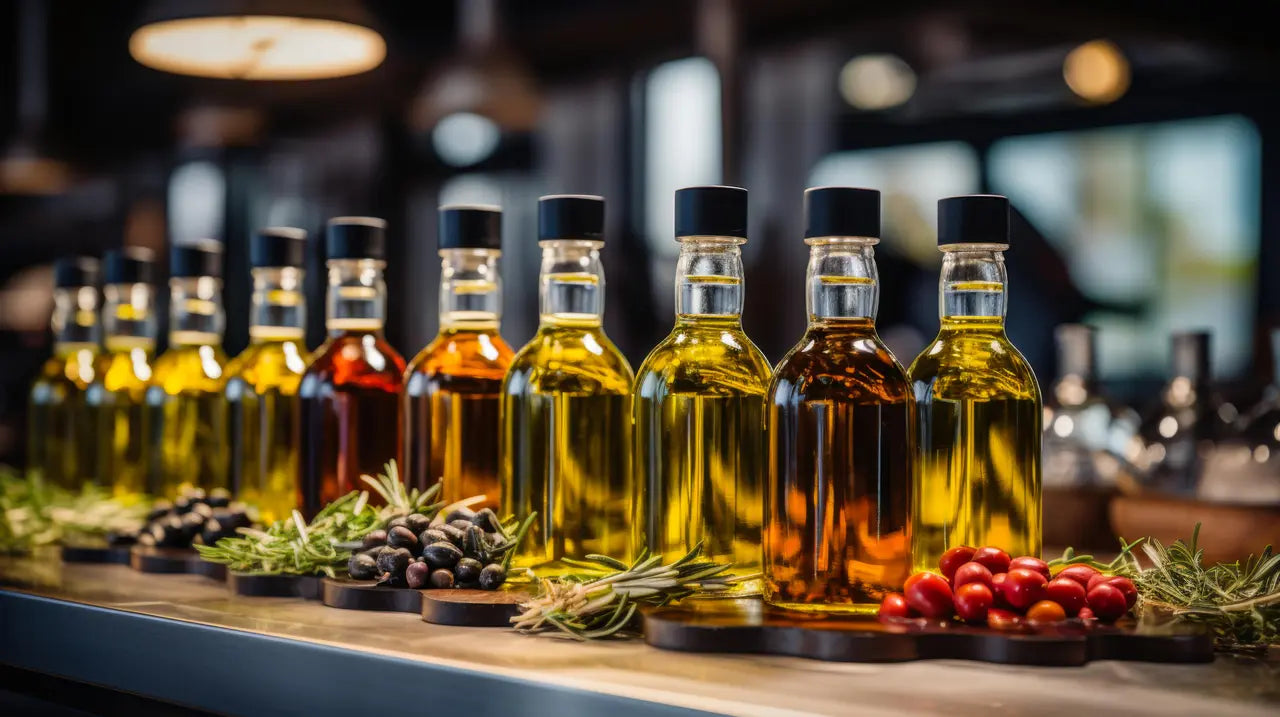Olive oil tasting is an exquisite journey that engages your senses and enhances your culinary experiences. Whether you’re a seasoned chef or a casual cook, understanding how to appreciate the nuances of olive oil can elevate your dishes to new heights. In this guide, we will explore the rich world of olive oil, from its production to tasting techniques, and how you can become a connoisseur in your own right.
The History of Olive Oil
Understanding the historical context of olive oil can deepen your appreciation for its rich flavors. The origins of olive oil trace back thousands of years, particularly in the Mediterranean region, where it has been a staple in diets and cultures. From its use in ancient religious ceremonies to its vital role in Greek and Roman cuisines, olive oil is intertwined with the history of civilization.
In ancient Greece, the olive tree was considered sacred, symbolizing peace and prosperity. Olive oil was used not only in food but also in cosmetics and as fuel for lamps. As trade routes expanded, the reach of olive oil extended beyond its native lands, influencing various culinary traditions. This history adds a layer of significance to every drop of olive oil we taste today.
Fast forward to the modern era, and olive oil has evolved both in production techniques and in types available. The rise of artisanal producers emphasizes the importance of quality and regional characteristics. It’s fascinating to consider how the cultivation methods and varieties of olives contribute to the unique flavors in your bottle of olive oil, making every tasting experience a reflection of its rich past.
How Olive Oil is Made
Learn about the olive oil production process, from harvesting olives to extraction and bottling. Understanding these steps can help you choose high-quality oils. The journey of olive oil begins with the careful selection of olives, which are typically harvested in the fall. The timing of the harvest is crucial; picking olives too early can lead to a bitter oil, while overripe olives may produce a bland oil.
After harvesting, olives undergo a process known as cold pressing which preserves their delicate flavors. The olives are washed, ground into a paste, and then pressed to extract the oil. This method is considered the best way to produce high-quality extra virgin olive oil. The oil is then filtered and bottled, preserving its fresh taste. This meticulous process underscores the importance of quality control in producing superior olive oils.
Interestingly, many olive oils on the market are blends, incorporating oils from different regions. This can impact flavor and quality. When choosing olive oil, look for labels that specify a single origin, as these tend to offer a more authentic taste experience. Different regions have distinct flavors to offer, reflecting the soil, climate, and traditional practices involved in their cultivation.
Choosing the Right Olive Oil
With so many varieties available, selecting the right olive oil for your needs can be daunting. We’ll discuss different types, grades, and what to look for when purchasing. Extra virgin olive oil is the highest quality grade, derived from the first pressing of the olives and characterized by its low acidity and robust flavor. On the other hand, refined olive oil undergoes processing that strips it of flavor and nutrients, making it a less desirable choice.
When staring at the vast array of bottles on store shelves, it’s essential to understand the role of flavor profiles. Some oils are fruity and mild, perfect for drizzling on fresh salads, while others may be more peppery and assertive, ideal for dipping bread or drizzling over grilled vegetables. Choosing the right oil can dramatically enhance your culinary creations.
Additionally, consider looking for certifications such as PDO (Protected Designation of Origin) or PGI (Protected Geographical Indication). These certifications assure the oil’s quality and origin. The packaging can also say a lot about the oil; dark glass bottles help preserve the oil from light, ensuring its flavors remain intact. Your selection process can be an engaging part of the tasting adventure.
The Basics of Olive Oil Tasting
Get ready to engage your senses! We will cover the essential steps involved in tasting olive oil, focusing on aroma, flavor, and texture. Begin by pouring a small amount of oil into a glass and warming it in your palm. This action releases the oil’s aromas, allowing you to appreciate its rich bouquet. Take a deep inhale, and familiarize yourself with the different scents. You may detect grassy notes, fruity undertones, or even herbal hints.
Next, take a sip of the oil. Allow it to coat your mouth, and then savor the moment. Note the initial flavors that hit your palate, as well as the aftertaste that lingers. High-quality olive oil often leaves a peppery finish, indicative of healthy olives. The texture can also vary; it might be buttery or more robust, similar to how wine tasting emphasizes body and finish.
Don’t be afraid to take your time during this process! Olive oil tasting is as much about the experience as it is about the flavor. With practice, you’ll begin to identify various subtleties in oils, developing a personal palate that will enhance your appreciation for this culinary staple.
Pairing Olive Oil with Food
Discover how to enhance your meals by pairing various types of olive oil with different foods. The key to unlocking the full potential of olive oil lies in understanding its compatibility with various dishes. For example, a fruity oil works wonders drizzled over a fresh caprese salad, enhancing the flavors of the tomatoes and mozzarella. Alternatively, a strong, peppery oil can elevate roasted vegetables, emphasizing their natural sweetness.
Consider using olive oil in various types of cuisine. Mediterranean dishes, with their fresh, vibrant ingredients, are an obvious match. However, don’t overlook other culinary traditions! A drizzle of olive oil over a hearty pasta can transform a simple dish into an extraordinary meal. Furthermore, exploring infused olive oils—such as those flavored with garlic or chili—can add unexpected depth to your cooking.
As you delve into the world of pairings, be open to experimentation. Every meal is a new opportunity to discover how different oils interact with flavors. Learning to match the right oil to your food not only enhances flavors but also brings an added dimension to the dining experience.
The Health Benefits of Olive Oil
Not only is olive oil delicious, but it also provides several health benefits. We will explore its nutritional properties and how it can contribute to a healthy diet. Olive oil is rich in monounsaturated fats, which are known to promote heart health. Studies suggest that incorporating olive oil into your diet may lower the risk of heart disease and improve cholesterol levels.
In addition to heart benefits, olive oil is packed with antioxidants, particularly vitamin E. These antioxidants help combat free radicals in the body, potentially reducing the risk of chronic diseases. Furthermore, the anti-inflammatory properties of olive oil make it a valuable addition to anyone’s kitchen, as it supports overall health and well-being.
Finally, olive oil has been praised for its role in the Mediterranean diet, which has been linked to longevity and a reduced risk of various health issues. By choosing high-quality extra virgin olive oil, you are not just enhancing your meals but also making a conscious choice for a healthier lifestyle. Every drop you pour is an investment in your health and culinary enjoyment.
Embracing the Journey of Olive Oil Tasting
As you embark on your olive oil-tasting journey, remember that practice makes perfect. Don’t hesitate to experiment with different types and brands to discover your personal preferences. Ultimately, the art of olive oil tasting is about appreciating the flavors and aromas that bring joy to your meals.







